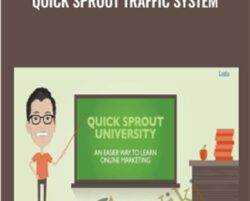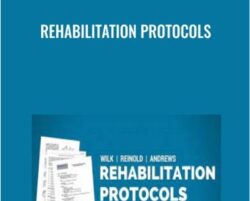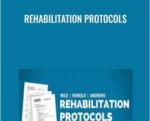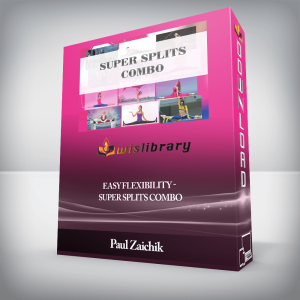Nonoperative, Postoperative, and Return to Sport Protocols for the Shoulder, Elbow, Hip, Knee, and AnkleKevin Wilk, Mike Reinold, and Dr. James AndrewsIt’s hard to stay on top of the current research and know how to progress your patients after a variety of different injuries and surgeries. There are so many different types of surgeries that can come into your clinic, each with their own subtle variations. Rehabilitation protocols are an important tool that you can use to:Assure you are following the precautions and time restrictions based on the tissue healing time frames following injury or surgeryKnow how fast or slow to progress a patientKnow if you are falling behind and assure people are making adequate progressKnow the criteria to transition to more advanced phases of rehabilitationUnderstand how different concomitant injuries speed up or slow down the processHAVE YOU EVER THOUGHTWhat exercises should I perform at week 6 following a total knee replacement?How does rehabilitation differ after a large or small rotator cuff tear?How much range of motion should I have at week 8 following a SLAP repair?How does rehabilitation differ based on using a patellar tendon or hamstring autograft during ACL reconstruction?How does adding a subacromial decompression change your rate of progression after a labral repair?Take the guess work out of how to progress your patients following an injury or surgery. AdvancedCEU has the latest rehabilitation protocols from Kevin Wilk, Mike Reinold, and James Andrews. Our protocols are backed by evidence and experience, being used in our own rehabilitation clinics everyday.Rehabilitation Protocols by Wilk, Reinold, and AndrewsKevin Wilk, DPT, Mike Reinold DPT, SCS, CSCS, and James Andrews, MD have created some of the most widely used, published, cited, and respected rehabilitation protocols based on exactly how they progress their patients. These are some of the same protocols that have been published in journals such as:We’ve recently updated and expanded our collection of protocols. You can now access over 177 rehabilitation protocols that cover the most commonly seen injuries and surgeries. There are many variations based on surgical technique, concomitant procedures, and patient activity level. Many different types of rehabilitation protocols are included:Postoperative rehabilitation protocolsPreoperative rehabilitation handoutsNonoperative rehabilitation protocolsExercise handoutsInterval return to sport programsWhat protocols are included?In total there are 177 newly revised and expanded protocols for nonoperative and postoperative rehabilitation of the shoulder, elbow, hip, knee, foot, and ankle, plus exercise handouts and interval return to sport programs!Shoulder ProtocolsRotator Cuff ProtocolsMini-open rotator cuff repair Type IMini-open rotator cuff repair Type IIMini-open rotator cuff repair Type IIIArthroscopic rotator cuff repair Type I – small tearArthroscopic rotator cuff repair Type II – medium tearArthroscopic rotator cuff repair Type III – large tearArthroscopic rotator cuff repair medium-large tear with PRP injectionArthroscopic rotator cuff repair in the overhead athleteArthroscopic rotator cuff repair with Bankart repairTraditional open and mini-open rotator cuff repairSubacromial decompressionRotator cuff debridementPartial thickness transtendinous rotator cuff repairPreoperative guidelines for subacromial decompressionPreoperative guidelines for rotator cuff repairArthroscopic subscapularis repairOpen subscapularis repair with biceps tenodesisShoulder Instability ProtocolsArthroscopic labral debridementAnterior capsular shift – acceleratedAnterior capsular shift – regularAnterior and posterior capsular shift – congenital laxityArthroscopic anterior Bankart labral repairArthroscopic anterior Bankart labral repair revisionOpen anterior Bankart labral repairArthroscopic anterior Bankart repair with subscapularis repairArthroscopic anterior and posterior Bankart labral repairOpen posterior Bankart labral repairArthroscopic posterior Bankart labral repairArthroscopic 360 degree labral repairArthroscopic laterjet procedureArthroscopic laterjet procedure with posterior capsular plicationArthroscopic capsular plicationArthroscopic capsular plication – overhead athleteThermal capsular shrinkage – acquired laxityThermal capsular shrinkage – congenital laxityThermal capsular shrinkage with SLAP repairThermal capsular shrinkage with SADSLAP Protocols (Superior Labrum Protocols)SLAP Type I and III debridementSLAP Type II repairSLAP Type II repair in the overhead athleteSLAP Type II repair with SADSLAP Type II repair with bursectomySLAP Type IV with biceps tenodesisOther Shoulder Rehabilitation ProtocolsAC joint reconstructionTotal shoulder arthroplasty – normalTotal shoulder arthroplasty – tissue deficientHemi-cap humeral head replacementReverse total shoulder arthroplastyDistal biceps repairProximal biceps repairTriceps repairOpen pectoralis major repairBiceps tenodesisNonoperative Shoulder Rehabilitation ProgramsGeneral PRP injection protocolInternal impingementSubacromial impingementMulti-directional instabilityAtraumatic instabilityTraumatic anterior instabilityDynamic stability for the overhead athleteRehabilitation of the overhead athleteAdhesive capsulitis / frozen shoulderElbow ProtocolsNonoperative UCL rehabilitationNonoperative UCL rehabilitation – acceleratedPRP Injection for UCLUCL reconstruction using palmaris graftUCL reconstruction using gracilis graftUCL reconstruction using gracilis graft – accelerated motion programUCL reconstruction using palmaris graft– accelerated motion programUCL reconstruction using the docking techniqueUCL repair with augmentationPre-operative UCL reconstruction programLCL reconstructionUlnar nerve transpositionLoose body removalElbow arthroscopy with Microfracture of OCD LesionOlecranon fracture ORIFNonoperative epicondylitisPRP Injection for Lateral EpicondylitisGeneral postoperative arthroscopic programGeneral nonoperative rehabilitation programRadial tunnel releaseValgus extension overload decompressionValgus extension overload posterior decompression with microfractureFlexor pronator release/debridementFlexor pronator release/debridement with extensor release attachmentHip ProtocolsHip labral repairHip femoroplasty with labral repairHip microfractureIliopsoas releaseProximal hamstring repairRehabilitation of hamstring strainsKnee ProtocolsACL ProtocolsACL reconstruction – accelerated patellar tendon autograftACL reconstruction – regular patellar tendon autograftACL reconstruction – contralateral patellar tendonACL reconstruction – hamstring autograftACL reconstruction – allograft tissueNonoperative ACL injuryPreoperative ACL reconstruction guidelinesACL reconstruction with MCL repairACL reconstruction with meniscus repairACL reconstruction with microfracture and meniscus repairACL and PCL combined reconstructionACL, PCL, MCL reconstructionACL, MCL, LCL, posterior lateral corner reconstructionACL, PCL, LCL, posterior lateral cornerACL, PCL, LCL, posterior lateral corner and lateral hamstring reconstructionACL, LCL, posterior lateral corner, and medial capsular reconstructionACL reconstruction with LCL repairACL with contralateral graft and primary LCL repairPCL ProtocolsNonoperative PCL injuryPCL reconstruction – double tunnelPCL reconstruction – single tunnelPCL and posterior lateral corner reconstructionPCL and ACL combined reconstructionMeniscus ProtocolsMeniscus repair – peripheral tearMeniscus repair – complex tearMeniscus allograft transplantPartial meniscectomyArticular Cartilage ProtocolsArthroscopic chondroplastyMicrofracture – small condyle lesionMicrofracture – medium to large condyle lesionMicrofracture – patellofemoral lesionAutologous chondrocyte implantation (ACI – Genzyme) – condyle and patellofemoral lesionsOsteochondral autograft transplantation (OATS / mosaicplasty) – CondyleOsteochondral autograft transplantation (OATS / mosaicplasty) – PatellofemoralOsteoarthritis Rehabilitation ProtocolsNonoperative osteoarthritisPreoperative total knee replacementTotal knee replacement – regularTotal knee replacement – active patientUnicompartmental knee replacementHigh tibial osteotomyHyaluronic viscosupplementation injectionPatellofemoral ProtocolsDistal realignmentLateral retinacular releaseProximal and distal realignmentMedial patellofemoral ligament repairMedial patellofemoral ligament repair with lateral releaseQuadriceps tendonitisPatellar tendonitisPatellar tendon repairPatellar tendon repair for an incomplete tearPatellar tendon repair revisionNonoperative patellofemoral rehabilitationPlica resectionORIF patella fractureOther Knee Rehabilitation ProtocolsGeneral knee arthroscopyQuadriceps tendon repairNonoperative hamstring strainNonoperative MCL injuryFoot and Ankle ProtocolsPRP injection to Achilles tendonAchilles Tendon Repair – AcceleratedAchilles Tendon Repair – ConservativeAchilles tendonitisLateral ankle sprainPlantar fasciitisExercise ProgramsFundamental shoulder programThrowers ten programAdvanced throwers ten programLittle league injury prevention programGolfers ten programPost-operative shoulder programScapular training programInterval Return to Sports ProgramsInterval throwing program10-day throwing program14-day throwing program21-day throwing programInterval throwing program – catchersInterval Little League / Softball throwing programInterval Softball pitching programInterval hitting programInterval tennis programInterval tennis program – advancedInterval golf programInterval football throwing programInterval javelin throwing programInterval running programsGet Rehabilitation Protocols – Kevin Wilk & Others, Only Price $59Tag: Rehabilitation Protocols – Kevin Wilk & Others Review. Rehabilitation Protocols – Kevin Wilk & Others download. Rehabilitation Protocols – Kevin Wilk & Others discount.rehabilitation protocol acl, rehabilitation protocol ankle fracture, rehab protocol achilles tendon repair, rehab protocol acl reconstruction, rehab protocol ankle sprain
 The Money Challenge: 30 Days of Discovering God’s Design For You and Your Money
The Money Challenge: 30 Days of Discovering God’s Design For You and Your Money
 Quick Sprout Traffic System – Neil Patel
₹7,138.00
Quick Sprout Traffic System – Neil Patel
₹7,138.00
Rehabilitation Protocols – Kevin Wilk & Others
₹9,130.00




